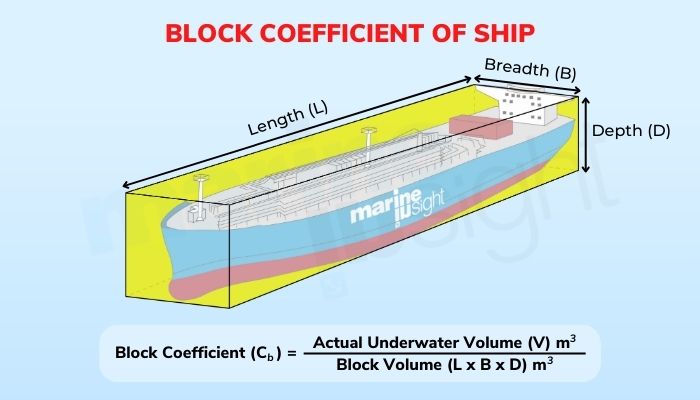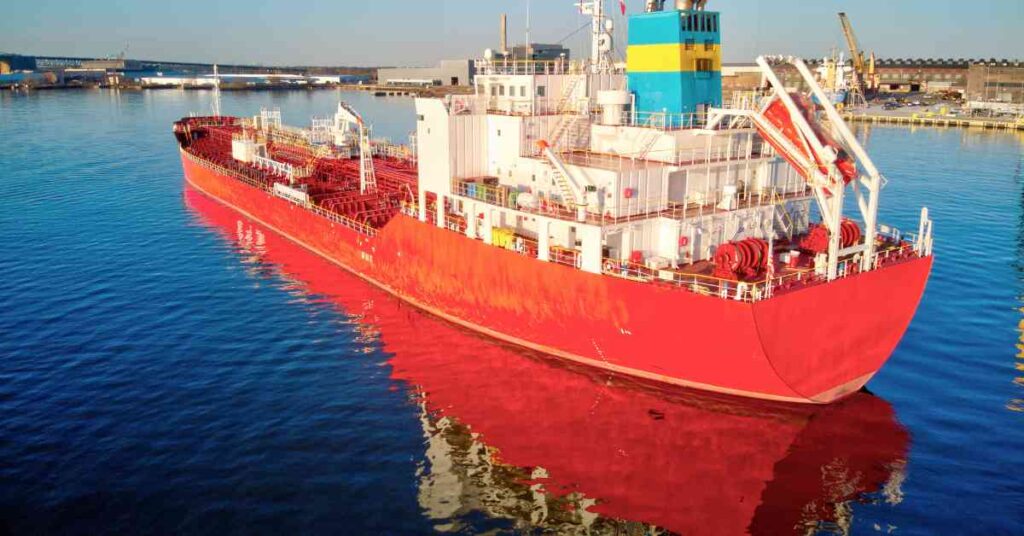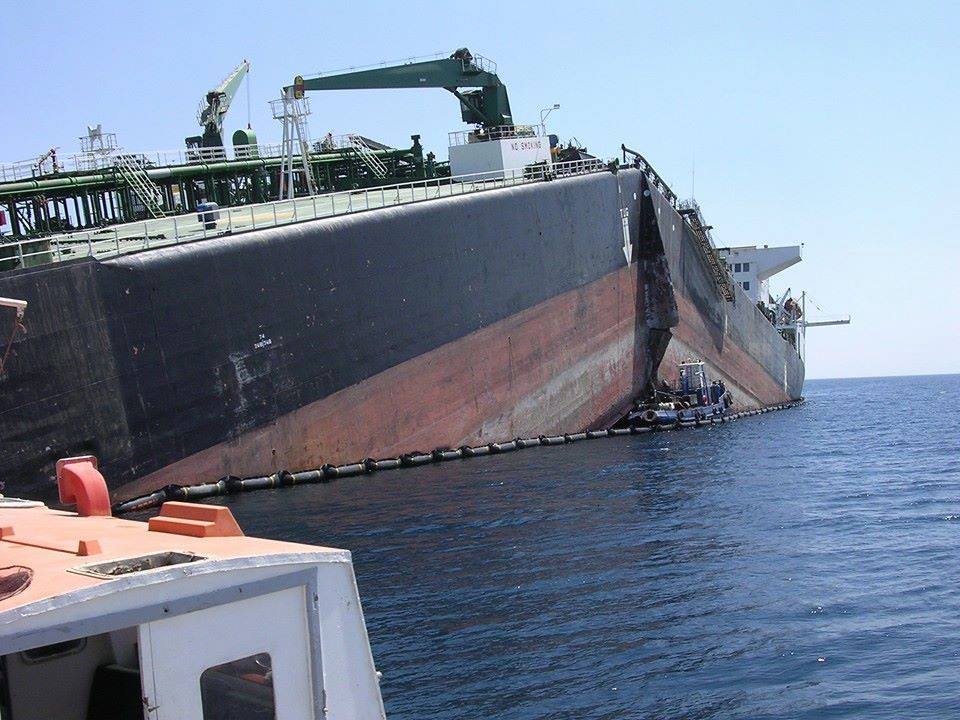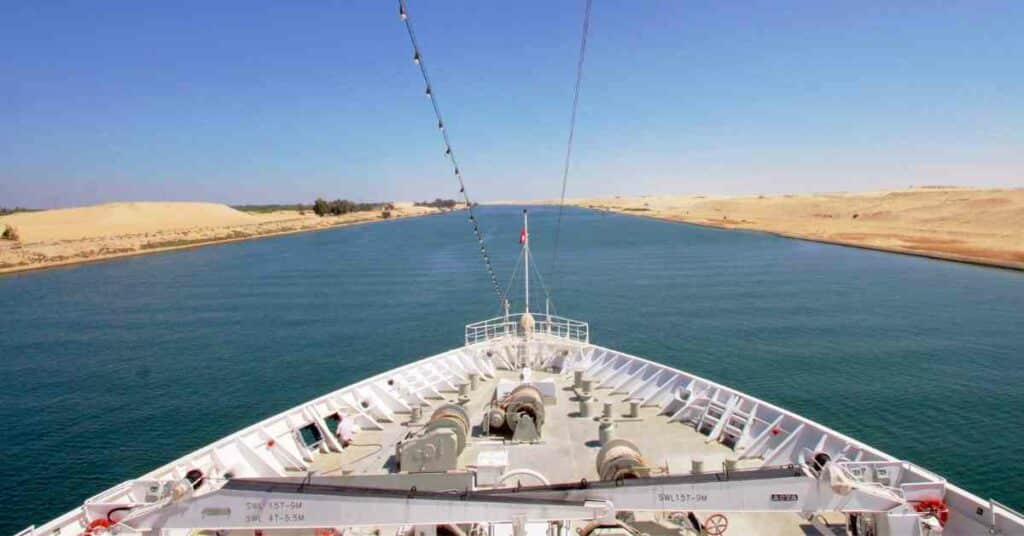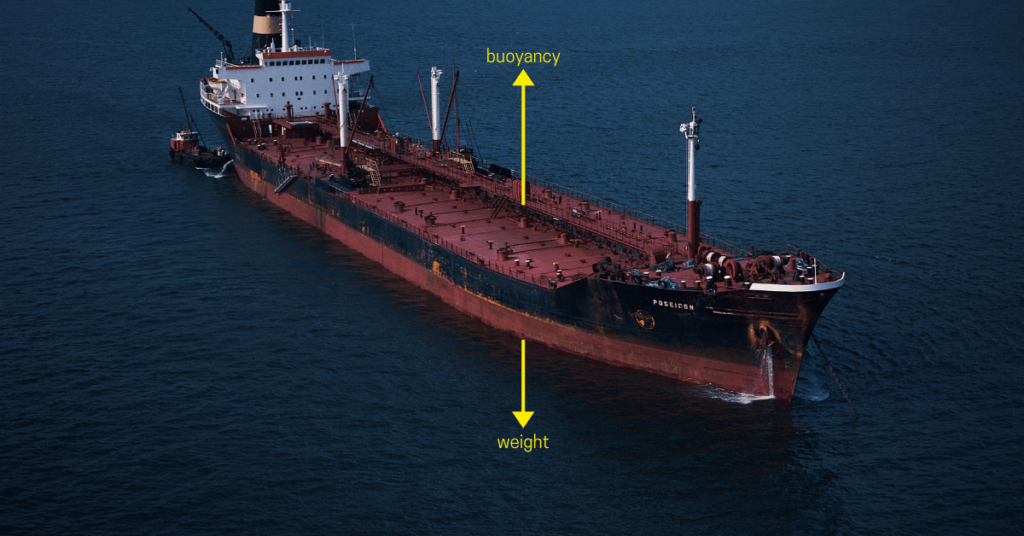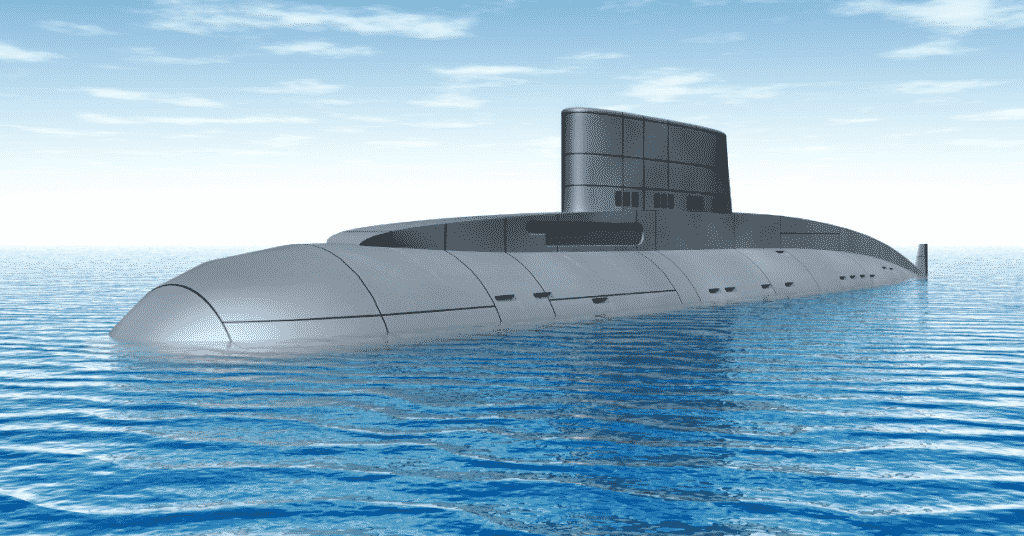What are Freeing Ports On Ships?
For exposed decks in ships, drainage is very important. Any form of accumulation of water can lead to a variety of problems ranging from stability to interference with other entities, structures, outfits, or machinery.
The main deck or weather deck has drainage holes or scuppers for the egression of water. However, the requirement is more when vessels have a significant bulwark arrangement in the way of the weather or main deck.
What is a bulwark?
A bulwark is a wall-like projection around the exposed deck and in line with the side shell plating such that it extends well above the main deck level. The purpose of a bulwark is for the protection of crew or personnel or passengers and deck cargo (if any) from falling off the sides. Moreover, bulwarks are also instrumental in protecting the exposed deck(s) from wave slaps and green water ingress during rough seas.
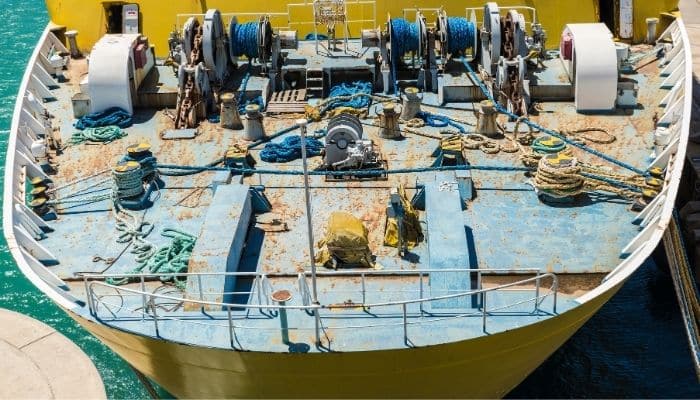
The height of these bulwarks adheres to certain regulations and guidelines based on the type of the vessel, service conditions, and other factors. For bulwarks above a certain height, a wall-like well is created with respect to the deck. This poses a higher risk for waterlogging as chances of drainage off the sides of the deck are absent.
Furthermore, the number of scuppers, drainage pipes, and so on are within certain limits, owing to strength and design requirements. Also, these openings are usually small (due to certain limitations on size with respect to deck strength).
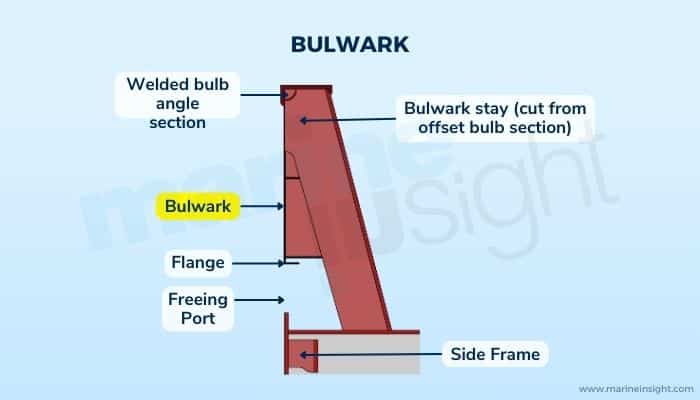
In scenarios where deck flooding is quite significant, these are not fully effectual for complete drainage. Moreover, the horizontal openings on the deck plate have higher chances of being clogged, rendered inefficient, and obstructed in cases like icing.
Hence, in addition to the other drainage arrangements, some other means of water egress are necessary.
Freeing ports were introduced as per Load Line 1966 regulations to mitigate this problem. These are well-defined openings on the bulwark plate itself in certain numbers and intervals. They act as cut-outs close to the deck level such that any form of water accumulation onboard gets continuously drained.
The freeing ports should be designed and disposed of with the sole objective of rapidly clearing off-deck water under all kinds of external conditions. As there is no hard and fast requirement, freeing ports can come in any shape, though for all practical purposes, they are usually round.
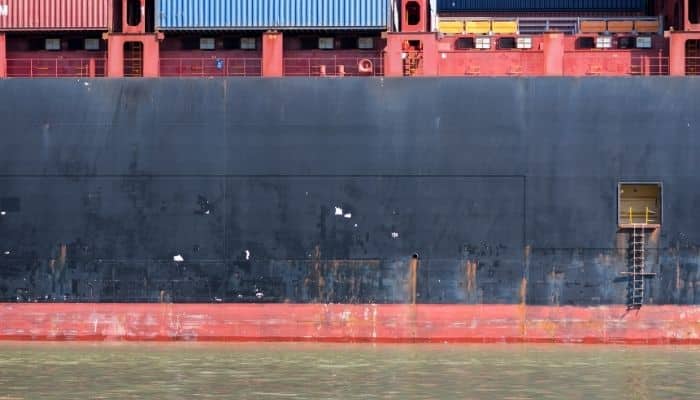
However, as per standard, they should necessarily have rounded corners for heightened efficiency and minimising stress concentrations due to sharp edges.
The number, arrangement, and disposition of the freeing ports depend on the vessel type, size, design, nature of the deck, other means of drainage, and, of course, the type of bulwark.
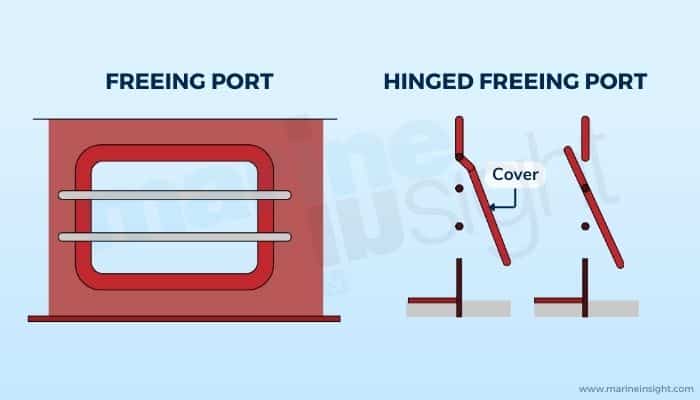
Larger vessels, as expected, shall have a greater number of freeing ports than smaller ones. The configuration of the bulwark also plays an important role. When the entire exposed deck is abutted by a bulwark, the number of bulwarks is more than decks only partially covered by bulwarks.
Moreover, the height of the bulwark also plays an important role. Those bulwarks that have a greater height have more number of freeing ports as the chances of waterlogging are higher. The number of bulwarks is alone not a definitive parameter as each freeing port is also attributed to a size constraint.
The number as well as the size along with the disposition is optimised depending on the requirement. The overall or aggregate area of all the freeing ports for a deck is an important factor concerning designers. Let us look a little more into the important aspects of freeing ports.
Some important aspects of Freeing ports
The technical factors for the design, construction, and disposition of freeing ports are as per certain rules and regulations.
- As far as the number of free ports is concerned, as mentioned above, it is as per the vessel design and the disposition of the bulwark.
- The number of port openings should be maximised so as to ensure full drainage of water from the deck.
- The freeing ports should also be decided based on parameters like sheer, camber, etc. In other words, the disposition of the freeing ports should be concentrated in areas with a greater chance of water accumulation.
- The lowermost periphery or edge of the freeing port opening should be as close as possible to the deck edge or deck line. For all practical purposes, at least 2/3rd of the port opening should be at the lower half of the bulwark height in a vertical sense.
- The interval between the ports (uniform or random) should be based as suited and catering to 100% drainage of water under all conditions.
- Once the disposition and arrangement of the required, the area of the ports is decided in terms of the total area. As per Load Line convention guidelines, for vessels lesser than 20 m in length, the net area for freeing ports should be given as 0.7+0.035 X l, where l is the aggregate linear extent of all bulwarking in the way of the deck. For vessels longer than 20 m, this is given as 0.07 X l.
- The vertical height of the bulwark is also important. For bulwarks extending more than 1.2 metres above the deck level, the areas of the freeing ports obtained from above shall be increased by 0.004 square metres with each 0.1-metre increment in height above 1.2. For example, if a bulwark has a height of 1.5 m above the main deck, the area (A) obtained from the above relations would be stated as A + 0.004 X 3A as there is an excess height of 0.3 m from 1.2 metres.
- Likewise, when the bulwark length is less than 0.9 m in height, the decrease in area is also 0.004 square metres per unit, a 0.1 m decrease in height from the 0.9 metre reference.
- In case of no sheer, the area calculated from above is increased by 5% with respect to what is obtained from above.
- Similarly, for certain designs of trunks and superstructures, the requirement varies.
- As per the rule, freeing ports having a large diameter above 230 metres should have intermediate railings or safety bars.
- Some bulwarks also have shutters that can be controlled as and when required.
- Although bulwarks are not primary or secondary structural members that contribute to the vessel’s strength, often, in many designs, they are kept as simple continuations of the side shell. Hence, for a considerable number of free ports or with ports having a significant size, sometimes additional strengthening is given around the openings as they pose a chance of reducing the structural integrity of the bulwarks and even localised areas in the way of the deck.
- Though not very commonly necessitated, freeing ports is also related to stability and buoyancy requirements. We all know about reserve buoyancy. For all practical purposes, if the maximum volume of water entrapped in the way of the exposed deck (considering full water tightness) by bulwarks and superstructures/deckhouses is greater than the necessary design reserve buoyancy, the number of freeing ports is accordingly increased.
- Some vessels, like fishing vessels, have special regulations for freeing ports.
You might also like to read-
- 11 Steps to Enhance Safety of Bulk Carrier Ships
- What is ODAS or Ocean Data Acquisition Systems?
- Types Of Water Transport
- What Is The Pivot Point Of A Vessel?
- Introduction To Ship Load Lines
Do you have info to share with us ? Suggest a correction

About Author
Subhodeep is a Naval Architecture and Ocean Engineering graduate. Interested in the intricacies of marine structures and goal-based design aspects, he is dedicated to sharing and propagation of common technical knowledge within this sector, which, at this very moment, requires a turnabout to flourish back to its old glory.
Latest Naval Arch Articles You Would Like:
Subscribe To Our Newsletters
By subscribing, you agree to our Privacy Policy and may receive occasional deal communications; you can unsubscribe anytime.










